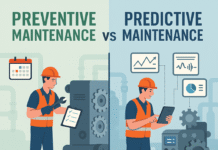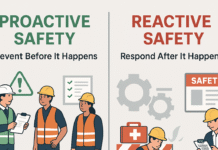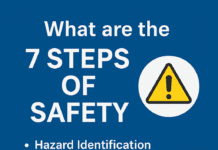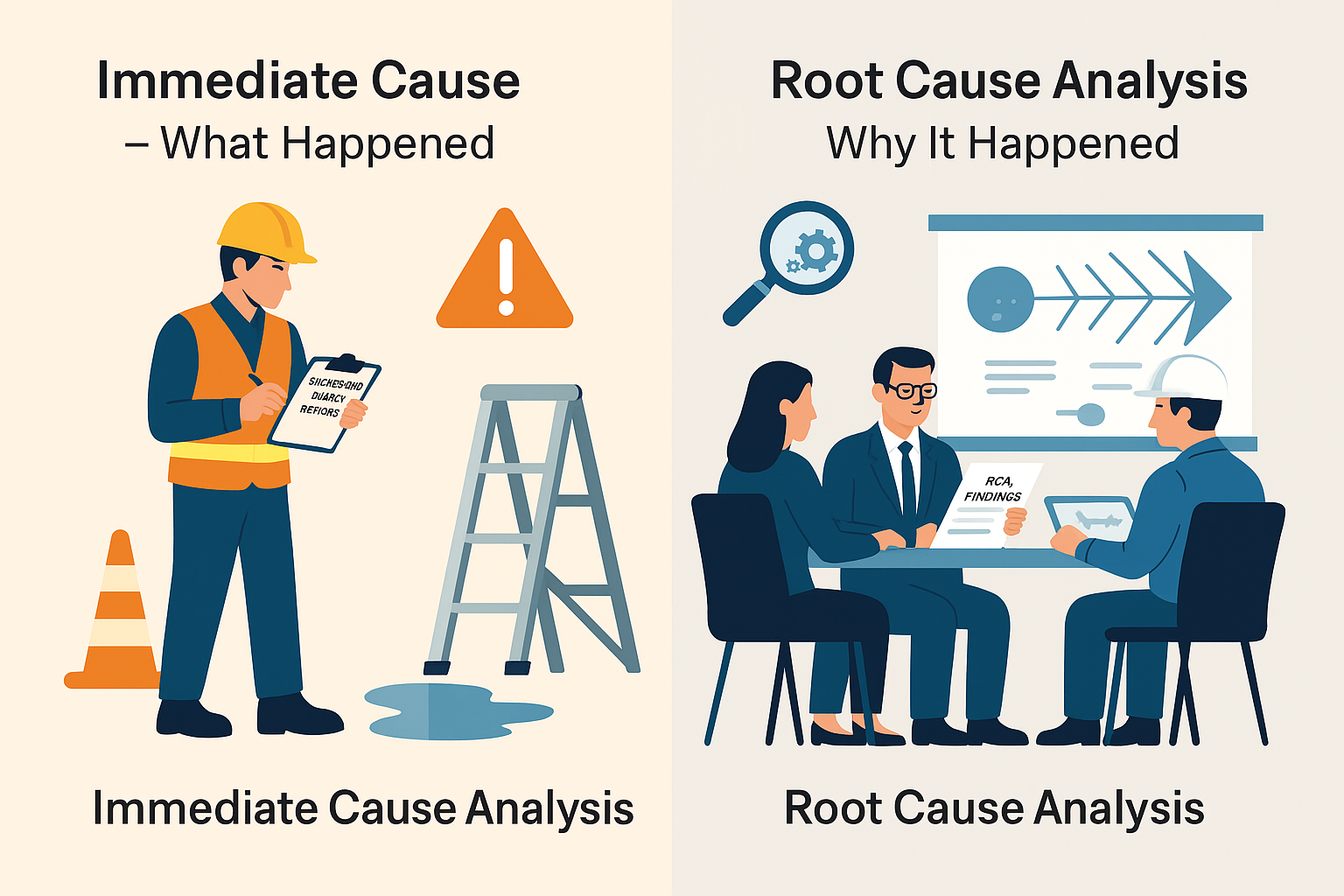
Vibration Risk Assessment: Protecting Workers’ Well-Being
Introduction to Vibration Risk Assessment
Vibration Risk Assessment : In today’s fast-paced industrial world, where heavy machinery and power tools are integral to various industries, ensuring the well-being of workers is paramount. One significant aspect of this is understanding and mitigating the risks associated with exposure to vibrations. This article will provide you with a comprehensive guide on vibration risk assessment, an indispensable tool to safeguard the health and safety of workers in environments where vibrations are a concern.
Importance of Vibration Risk Assessment
Vibrations generated by machinery can pose serious health risks to workers. These risks range from hand-arm vibration syndrome (HAVS) to whole-body vibration (WBV)-related health issues. The importance of vibration risk assessment lies in identifying, evaluating, and controlling these risks effectively, ultimately reducing the likelihood of health problems for employees.
Vibration Risk Assessment Methods
Vibration risk assessment primarily focuses on two types of vibration exposure: hand-arm vibration (HAV) and whole-body vibration (WBV). Each of these exposures necessitates specific assessment methods and considerations.
Hand-Arm Vibration (HAV) Hand-arm vibration results from the use of hand-held power tools and can lead to conditions such as HAVS. To assess this risk effectively, we need to follow a structured approach:
Whole-Body Vibration (WBV) WBV exposure occurs when a worker’s whole body is exposed to vibrations, often due to prolonged periods spent in vehicles or on machinery. To assess WBV risk, the following considerations are crucial:
Steps to Conduct a Vibration Risk Assessment
Identify Tools and Machinery The first step in a vibration risk assessment is to identify the tools and machinery in use that may expose workers to vibrations.
Determine Exposure Duration Assess the duration of exposure to vibrations. Long periods of exposure increase the risk to workers.
Measure Vibration Levels Using specialized equipment, measure the actual vibration levels produced by the machinery.
Interpreting Vibration Measurement Data
Understanding the data collected from vibration measurements is essential. Two primary types of measurements are frequency-weighted and unweighted. Frequency-weighted measurements consider the actual vibrations’ potential harm, while unweighted measurements provide an overview of the vibrations without considering their effect.
Setting Exposure Action and Limit Values
Legal requirements often dictate exposure action and limit values, which should not be exceeded. These values are in place to protect workers from harm.
Implementing Control Measures
To reduce exposure to vibrations, various control measures can be implemented:
Engineering Controls These involve modifying the machinery or tools to reduce vibrations. Examples include isolating the equipment, using anti-vibration mounts, and incorporating damping systems.
Administrative Controls Administrative controls focus on organizing work to minimize exposure, such as scheduling breaks or rotating tasks.
Personal Protective Equipment In cases where other measures are insufficient, personal protective equipment like anti-vibration gloves can provide an additional layer of protection.
Training and Awareness
Proper training is essential to ensure that workers are aware of the risks and preventive measures. It empowers them to actively protect themselves from vibration-related health issues.
Record-Keeping and Documentation
To ensure compliance with regulations, it’s vital to maintain detailed records of vibration risk assessments, control measures, and employee training.
Case Study: A Real-World Vibration Risk Assessment
Let’s examine a real-world scenario to see how vibration risk assessment is applied:
Scenario: Construction Site Jackhammer Operation
In a bustling construction site, workers are busy with various tasks, but one of the most common and challenging tasks is operating heavy-duty jackhammers. These powerful machines are essential for breaking through concrete and rock to advance construction projects. However, the prolonged use of jackhammers exposes workers to potentially harmful vibrations, making it crucial to conduct a vibration risk assessment.
Vibration Risk Assessment for Jackhammer Operation
Step 1: Identify Tools and Machinery
- Identify the specific jackhammers in use and gather information about their specifications and usage patterns. It’s crucial to know which workers are operating the jackhammers regularly.
Step 2: Determine Exposure Duration
- Observe and document the duration for which workers operate the jackhammers daily. In this scenario, it’s discovered that workers typically use jackhammers for four hours a day.
Step 3: Measure Vibration Levels
- Utilize specialized equipment to measure the actual vibration levels produced by the jackhammers. The measurements reveal an exposure level near the limit values set by relevant regulations.
Interpreting Vibration Measurement Data
- The measurement data show that the jackhammers are indeed producing vibrations that can potentially harm the workers. This requires immediate attention to mitigate risks.
Step 4: Setting Exposure Action and Limit Values
- The legal requirements dictate that exposure to vibration should not exceed certain values. In this case, the exposure levels are nearing these limit values, indicating a need for action.
Step 5: Implementing Control Measures
- Several control measures are implemented to reduce workers’ exposure to vibrations:
- Anti-vibration gloves are provided to all jackhammer operators.
- Work schedules are adjusted to include frequent breaks to minimize continuous exposure.
- Workers are given proper training on how to use the jackhammers efficiently, reducing the need for extended operation.
Step 6: Training and Awareness
- Training sessions are conducted to educate the workers about the risks associated with vibration exposure and the proper use of anti-vibration gloves. Workers are encouraged to report any discomfort or health issues.
Step 7: Record-Keeping and Documentation
- Detailed records are maintained, including records of vibration measurements, the distribution of anti-vibration gloves, worker training, and the scheduling of breaks. These records are crucial for compliance and future assessments.
This scenario highlights the importance of conducting a vibration risk assessment in a real-world setting. By identifying risks, interpreting data, setting exposure limits, and implementing control measures, the construction company can ensure the safety and well-being of its workers.
Conclusion
Vibration risk assessment is a crucial aspect of safeguarding the health and well-being of workers exposed to machinery-induced vibrations. By identifying risks, implementing control measures, and ensuring compliance with legal requirements, companies can protect their employees and maintain a safe working environment.
Vibration Hazards and Control Measures
Whole-Body Vibration Syndromes
The Effects of Vibration on the Human Body
Frequently Asked Questions
What are the health risks associated with vibration exposure? Exposure to vibrations can lead to various health issues, including Hand-Arm Vibration Syndrome (HAVS) and whole-body vibration-related problems.
Are there specific regulations governing vibration risk assessment? Yes, there are specific regulations, depending on the region, that dictate how vibration risk assessments should be conducted to protect workers.
How often should a company conduct vibration risk assessments? The frequency of vibration risk assessments depends on the nature of the work and the local regulations. In many cases, these assessments should be conducted regularly.
Can vibration risk assessments be applied to any industry? Yes, vibration risk assessments are versatile and can be applied to any industry that utilizes machinery or tools generating vibrations.
























